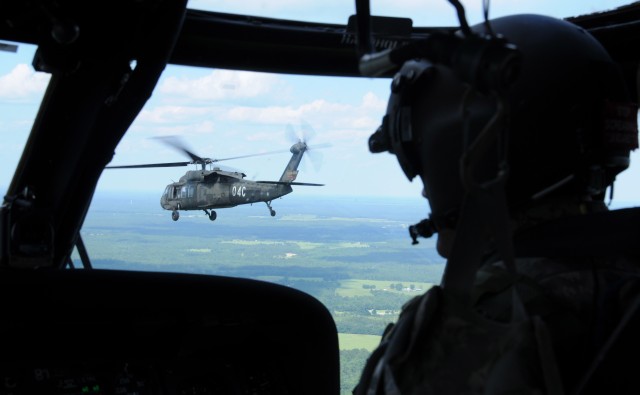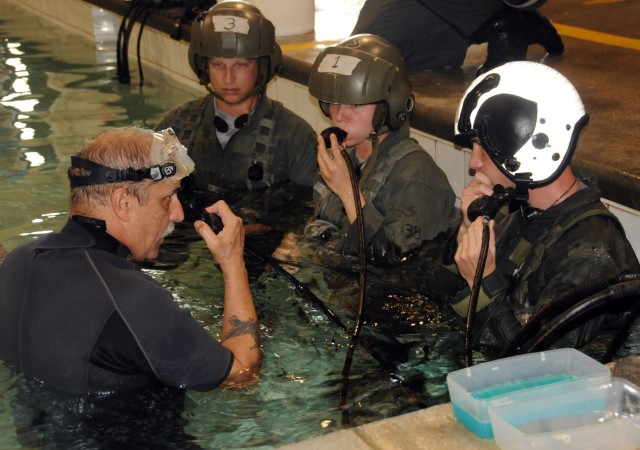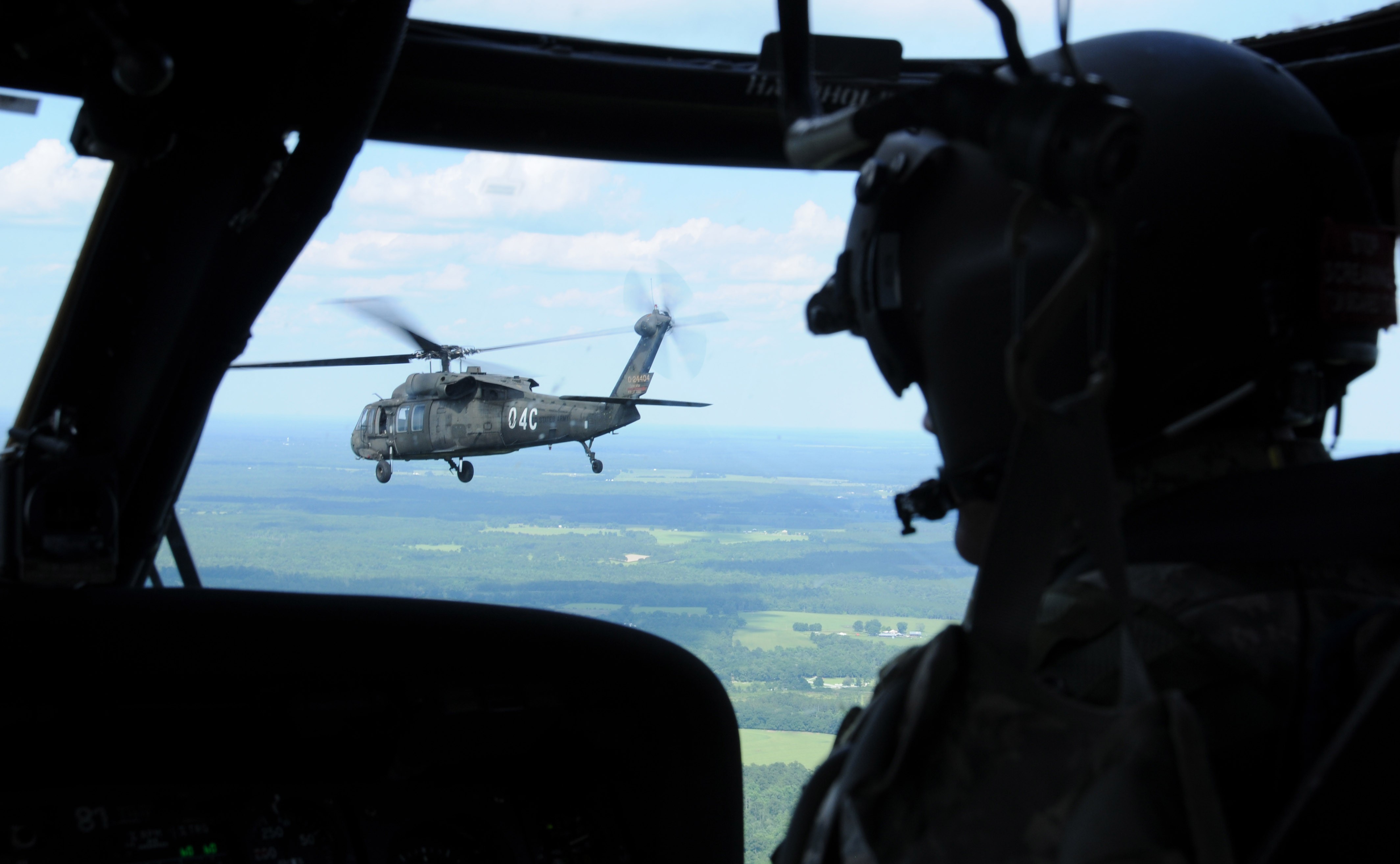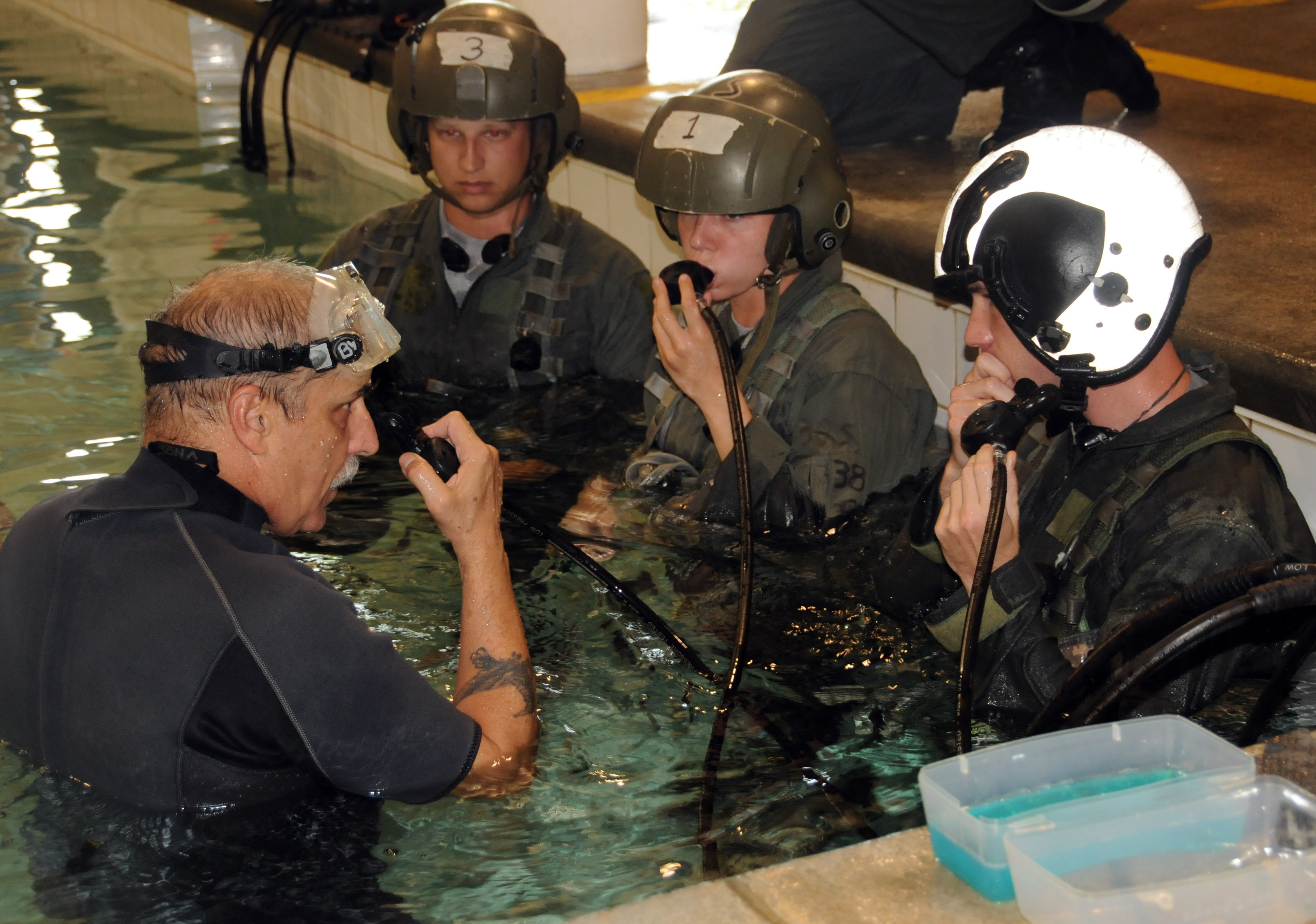FORT RUCKER, Ala. -- In April 2009, Defense Secretary Robert M. Gates and Gen. Martin Dempsey, U.S. Army Training and Doctrine Command commanding general, visited to the U.S. Army Aviation Center of Excellence and Fort Rucker to assess the center's flight training program and the installation's supporting infrastructure.
After touring Fort Rucker and meeting with USAACE and garrison leaders, flight students, instructor pilots and aircraft maintenance personnel, the secretary concluded his visit by meeting with national and local news correspondents at Cairns Army Airfield.
"I've recommended the president add an additional $500 million to increase the throughput of pilots and maintenance crews for our helicopters, for our rotary lift capability," Gates told reporters. "That will help us train more instructors, help with the infrastructure, probably get some additional airframes and, at the end of the day what's most important, get us more well-trained pilots that can support our warfighters."
What resulted from Gates' visit was a fiscal commitment by the Department of Defense for more than $310 million to increase flight student throughput at Fort Rucker given the increased demands for Army Aviation capabilities in Iraq, Afghanistan and elsewhere around the world. Special Operations Aviation would receive additional funding separate from the $310 million earmarked for USAACE.
Nearly two years after his visit, the additional funding promised by Gates and authorized by the Office of the Secretary of Defense Resource Management Decision 802 has paid great dividends in increasing USAACE's capacity to generate relevant combat power for the operating force.
To meet the operating force's demand for trained and qualified Army Aviators, Army Aviation was directed to incrementally increase the number of flight students from 1,200 in fiscal year 2009 to 1,463 in FY12, and 1,558 by FY15. However, given the complexity of interrelated factors, any increase in student input required additional and corresponding increases in classroom seats, instructor pilots, training aircraft, hangar and ramp space across the five Fort Rucker base fields and a greater refuel and aircraft maintenance capability. The increase in flight training operations meant more airspace congestion and an increased demand for air traffic services throughout the 32,300-square mile local flying area, and the center's 17 stage fields and 38 remote training sites.
Since 2009, USAACE committed more than $92 million for construction of maintenance facilities and additional classrooms across Fort Rucker.
A majority of the funds went to hangar and maintenance facility renovation at the center's four base fields (Hanchey, Cairns, Shell and Knox Army Airfields). Additionally, funding allowed the center to renovate existing classrooms, bringing them up to TRADOC's Classroom XXI standards that provides a state-of-the-art environment that leverages the latest technology to assist in making training more effective and efficient.
One of the greatest resource challenges facing USAACE was the number of available instructor pilots. Although the 110th Aviation Brigade remains critically short of instructor pilots with military manning at 74 percent, RMD802 funding allowed for the hiring of 56 additional civilian contract IPs.
With the support of the Army National Guard Bureau, USAACE used the Contingency Operation for Active Duty Operational Support to bring in additional volunteer IPs from the Army National Guard to augment the flight training program. Under CO-ADOS, Reserve Component Soldiers volunteer for active duty assignments for up to three years to support various training requirements pursuant to Title 10 authority.
CO-ADOS has been a win-win for the flight training program at Fort Rucker and for the IPs who volunteer. To date, 32 ARNG IPs from 20 states have volunteered for the program and will remain at Fort Rucker for at least 24 months pursuant to available funding. Fort Rucker was also able to fund 19 additional Air Traffic Control specialists, also mobilized under CO-ADOS, to support the increase in flight training operations.
The Army's Human Resource Command and G-1 are currently working with USAACE to fill Fort Rucker's IP authorizations to 85 percent. This will bring USAACE to 100 percent aggregate assigned when combined with IPs assigned when combined with the CO-ADOS and contracted IPs.
Adding additional aircraft to Fort Rucker's training fleet was another challenge for the command.
Prior to spring 2009, the center's training fleet consisted of 60 AH-64 Apaches, 77 UH-60 Black Hawks, 25 CH-47 Chinooks, 36 OH-58D Kiowa Warriors, all dedicated to advanced aircraft flight training and 183 TH-67 primary training aircraft. With the support of a number of Army Reserve, ARNG and active duty units Army wide, the Army redistributed 24 AH-64s and 21 UH-60s to augment the center's training fleet. Funding also allowed contracted maintenance to support an increase of 100 flight hours-per-airframe per year (up from 500 hours) that would correspond to the increased demand in student input numbers.
With the incremental increase in IPs, available training aircraft and Aviation maintenance and classroom capacity, the command began to slowly increase the number of flight students in mid-2009 by increasing the student capacity of the Initial Entry Rotary Wing common core classes. A typical IERW class in 2008 included 52 students and yielded an annual total of about 1,200 IERW graduates. With the multitude of improvements made possible by RMD802 funding, by April 2011, IERW classes will have 60 students and will generate 1,267 flight students in FY11 and reach a steady state of 1,558 graduates in FY15.
While the Aviation Center is on a solid glide path to increase the number of flight graduates over the next few years, output alone is only half of the equation needed to train and sustain the flow of highly qualified Aviation professionals to rapidly meet the demands of commanders worldwide. The other half, and equally complex, involves eliminating the backlog of flight students currently in the training pipeline.
Upon completion of the Basic Officer Leadership Course, flight students undergo Helicopter Over Water Survival Training and Survival, Escape, Resistance and Evasion Level-C training prior to beginning IERW common core flight training. Upon completion of IERW, students move to advanced aircraft training in one of the four advanced aircraft (Apache, Kiowa Warrior, Black Hawk or Chinook). This is where backlog occurs due to a number of factors including aircraft availability, weather, instructor pilot availability, classroom scheduling and even student availability.
In some past cases, students spent up to two years at Fort Rucker when actual flight training instruction only demands nine to 12 months depending on the advanced aircraft training the student received following IERW common core.
In August 2010, the command established a Student Backlog Tiger Team from experts across the command to define the problem(s), collect data, assess current policies and procedures and develop viable solutions to eliminating the current backlog. The team is looking holistically at flight training from before students arrive at Fort Rucker to after they graduate and depart. Since spring 2009, USAACE managed to reduce the backlog by 46 percent. To date, the team has made a number of recommendations that, once implemented, will serve to completely eliminate the backlog sometime between May and September. To us, sooner is better than later.
When I became the Army Aviation branch chief and commander of USAACE and Fort Rucker in August 2010, I made the elimination of the flight training backlog no later than September 2011 the command's highest priority. Again, we are on track to meet this goal based on the incredibly hard work being done by Soldiers, civilians and contractors across USAACE and Fort Rucker.
It was the leadership and oversight of former USAACE and Fort Rucker commander Maj. Gen. Jim Barclay and his team who set the gears in motion nearly two years ago that got us where we are today. In September 2009, Barclay told a group of local business leaders that the easy part in this was getting the check and depositing it in the bank.
"The truly challenging part," he said, "was putting together an excruciatingly detailed plan and synchronizing it across the entire Aviation Center of Excellence so that every tax-payer dollar was spent wisely and with the greatest return."
With his vision and dogged determination, the USAACE team took the ball into the "Red Zone." I believe we can get it into the "End Zone." We are determined to do so.
While it may appear that we are "first and goal" there is still hard work to be done. My guidance five months ago was that flight training standards would not be lowered. That guidance will not change.
Our branch's reputation, forged by the professional men and women who form Army Aviation, has never been stronger because we remain a standards-based profession. That cannot change even with the tough decisions that will follow in the upcoming months.
We will also maintain a cost-culture awareness in everything we do that will allow us to accomplish the mission at best cost rather than at any cost. As our Army moves into fiscally uncertain times, Army Aviation currently has sufficient resources to continue training, support world-wide operations and respond to new threats or crisis. But, we recognize that there will be no excess.
The promise made by Gates and OSD in April 2009 was honored. The return on that investment will ensure Army Aviation meets the demands of commanders worldwide, today and in the years to come.




Social Sharing